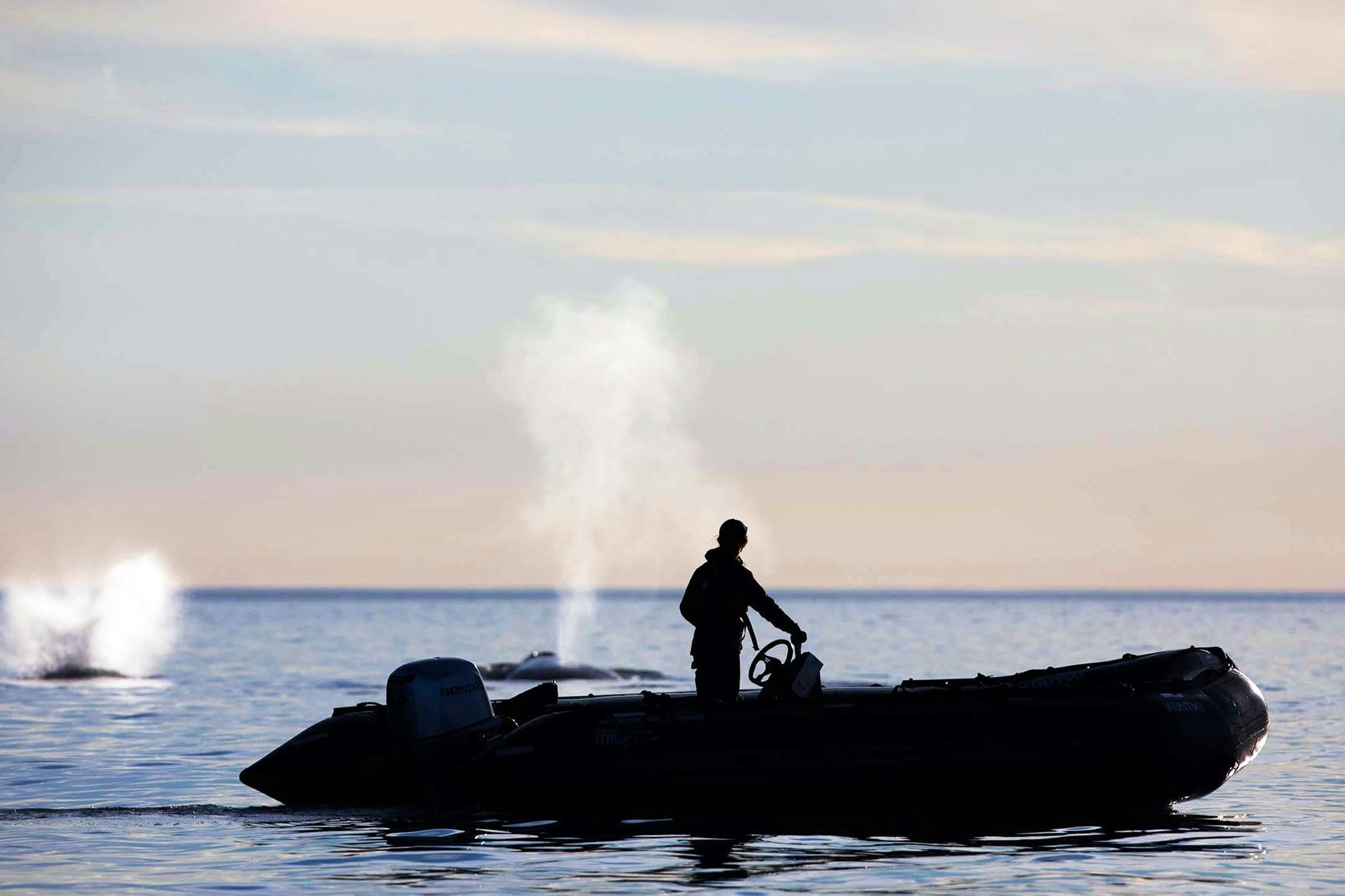Meet Cory Hom-Weaver, Silversea’s Expert Whale Whisperer
“I could have reached out and touched them,” says Cory Hom-Weaver, recalling one of her closest encounters with wildlife while working as an Expedition Expert aboard a Silversea ship. While transporting a group of guests to the Antarctic island of Danco, two sub-adult male humpback whales suddenly approached the craft.

Hom-Weaver utilizes her specialism in marine biology to enrich the travel experience for guests, but even she can’t guarantee such close encounters with these spectacular mammals. “I’d never seen animals so curious about the Zodiacs,” she remembers. The whales were exhibiting behavior that is characteristic of the order Cetacea, which encompasses carnivorous marine mammals such as whales and dolphins. That is, they were spy-hopping, which involves sticking their whole heads out of the water to observe the scene above the surface. “We were all gifted with really close and personal encounters,” Hom-Weaver recalls, as she remembers the group’s observation of the humpback pair.
Cory Hom-Weaver, Silversea Cruises
“I’ve seen people break down and start crying because they’re so overwhelmed by emotion,”
Experiences such as those with the spy-hopping humpbacks can be life-defining for Silversea’s Expedition Experts and guests alike. “I’ve seen people break down and start crying because they’re so overwhelmed by emotion,” says Cory, who has been dubbed by some as a ‘whale whisperer,’ in jest.
Ever respectful of the wildlife, the young scientist is quick to clarify that there was absolutely no touching; she always advises expedition guests to maintain the utmost respect for the wild animals. In addition to enabling rare encounters with sea mammals, her responsibilities encompass lecturing on Silversea’s expedition ships, leading land excursions and whale spotting from the ships’ top decks. It’s all in a day’s work for the cruise line’s expert whale whisperer.

She hadn’t initially thought she’d be spotting killer whales and humpbacks in some of the world’s remotest regions for a living, though. Instead, she envisaged a career tending to horses. She grew up riding and training the hoofed animals in Hawaii, which is also where she developed a love for the great outdoors, as her father was a boat captain. Cory studied animal sciences with the goal of becoming a horse vet. But she found the horses’ owners could be far more demanding than the animals ever were. After one season interning with an expert on whale acoustics, she became intrigued by how the giants’ sounds and vocalizations differ—like dialects—by population. Hom-Weaver can be found listening for whale song in oceans across the world when not aboard a Silversea ship.
Now, she has ample opportunity to study the species that have come to fascinate her, while also introducing others to the Cetacean world and helping, she hopes, to conserve it. Days aboard ships are long, but they also provide the chance to witness these remarkable creatures in their natural habitat.

When asked about her deep travel experiences with Silversea, Hom-Weaver’s mind immediately turns to a particularly extraordinary experience that occurred while zipping along the Chukotka Peninsula, the easternmost point in Russia, by Zodiac. On that calm and sunny day, the inky form of an orca whale suddenly appeared from the depths. “[It] came right under the boat, turning on its side,” she says. “You could see its whole underside and we seemed to lock eyes. No one on the Zodiac could believe how close we came to the animals. Everyone was through-the-roof excited, roaring with delight.”
Cory also relishes the chance to stimulate her curiosity about marine mammals and deepen her understanding of their behavior. “The part of the brain that’s related to emotion in killer whales is significantly larger than in humans,” Hom-Weaver explains. “They might actually experience emotion in a different dimension than we can comprehend.” When it comes to the mysterious orcas, in particular, there remain chasms of uncertainty that are almost as vast as the depths of the oceans they traverse.

As well as opportunities to experience rare moments with wildlife, expeditions are an education, Hom-Weaver hopes. “Having these interactions with the environment or with an animal creates an emotional connection,” she adds. Hom-Weaver always tries to give a lecture on the dangers these threatened animals currently face—chief among them are plastics, chemicals, and other contaminants of the marine environment. With some hope, these experiences might just contribute to the preservation of the marine habitats of these majestic creatures for years to come.
